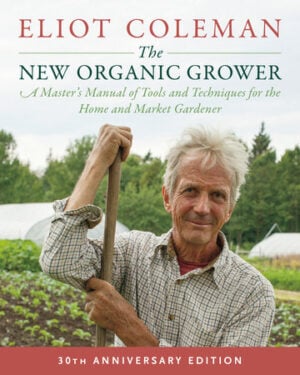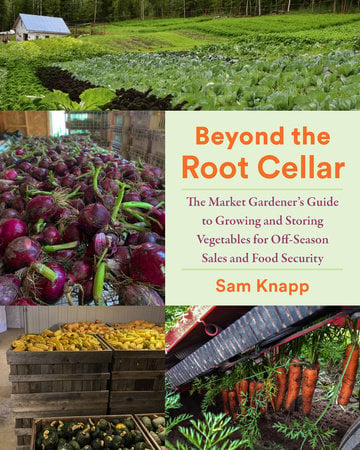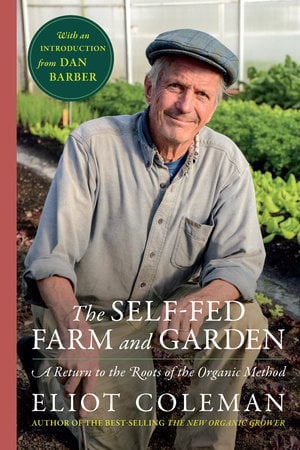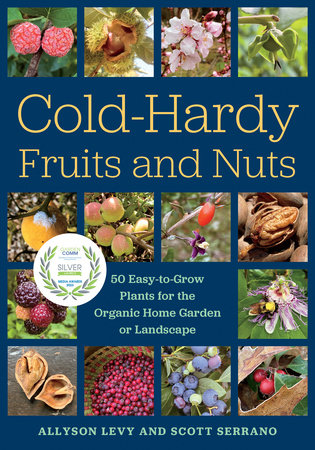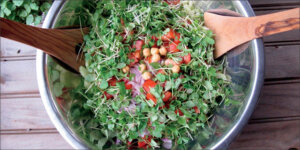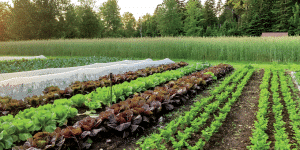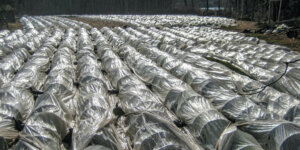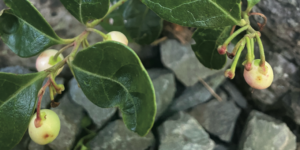How to Extend the Growing Season
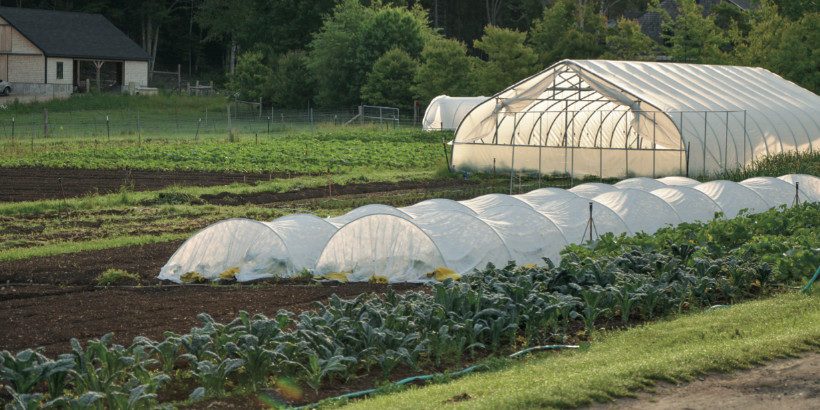
Winter may be coming, but that doesn’t mean you should put away those tools just yet! Extend the growing season well past the first frost with some proper modifications.
The following excerpt is from The New Organic Grower, 30th Anniversary Edition by Eliot Coleman. It has been adapted for the web.
Extend the Growing Season: How to Compete
We live in an age of supermarket thinking where customers have come to expect out-of-season produce. The supermarket sells tomatoes in April and peas in October. In order to compete, local growers should attempt to come close to those goals for the period of the year when their marketing operation is open.
For almost all vegetable crops, a longer growing season is desirable if it can be attained economically. Vegetable growers can capture and hold new markets and receive higher prices by having produce available as early or as late as possible compared with unprotected outdoor crops. The grower meeting a local demand or running a market stand will find that a policy of “everything all the time” pays off handsomely.
The Secret to Success
The secret to success in lengthening the season without problems or failures is to find the point at which the extent of climate modification is in balance with the extra amount of time, money, and management skill involved in attaining it. When planning for a longer season, remember the farmer’s need for a vacation period during the year.
The dark days of December and January, being the most difficult months in which to produce crops, are probably worth designating for rest, reorganization, and planning for the new season to come. In any season extension, the aim is always to keep the systems as simple and economical as they can be without relinquishing the dependable control necessary to ensure the success of the protected cultivation.
A broad range of options is available. This review will run through most of them and then recommend those that fit best into a small-scale vegetable operation.
Climate Modification
When considering the possibilities for extending the growing season, we should be aware of options other than building a greenhouse or moving south. There exist many low-cost or no-cost practices that can make a significant contribution to modifying climate conditions in the grower’s favor. As a rule of thumb, the more we wish to modify the climate, the more energy we must expend in doing so.
The simplest way to improve the growing conditions for early crops is to find, create, or improve such warm and sheltered spots.1 We can temper the climate with minimum energy expenditure if we work with natural tendencies and try to augment their effects.
Three common natural parameters that are logical candidates for modification are the degree and direction of slope of the land; the amount of wind exposure or protection; and the heat-absorbing potential of the soil (soil color).
Plastic Mulch
The next logical step beyond charcoal dust is a simple sheet of material laid on the ground as a mulch to aid in warming the soil. Polyethylene plastic is the standard material. Plastic strips 4 to 6 feet (1.2 to 1.8 meters) wide and as long as convenient are laid on the soil with the edges buried to anchor them against the wind. Four things contribute to the popularity of plastics as a commercial mulch.
Plastic mulch retains moisture, warms the soil, can prevent weed growth, and is readily adaptable to mechanization for application and removal.
Low Covers
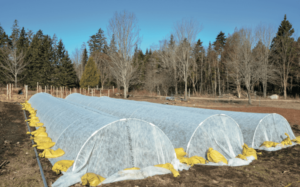
They can be moved or erected to cover specific crops as necessary. Whereas plastic mulch used alone will justify its cost in earlier maturity of warm-season crops, in practice it is usually combined with a low plastic cover for even more improved results.
This is a rapidly developing field, and new products appear every year. I expect that future developments will supersede the design, but not the intent, of these covers.
Caterpillar Tunnels
By “walk-in tunnels,” I mean unheated structures consisting of a single layer of plastic supported by spaced arches or hoops tall enough to walk and work under. In design they vary from very lightweight units on the one hand to structures indistinguishable (except for the lack of supplementary heat) from a greenhouse. I have seen tunnels 200 feet (60 meters) long, although 100 feet (30 meters) is a more common length, and 50 feet (15 meters) may be more manageable in a climate requiring close attention to ventilation.
Twelve feet (3.7 meters) is the usual minimum width and 17 feet (5.2 meters) the maximum, although the most popular models are 14 to 16 feet (4.3 to 4.9 meters) wide (enough to cover four 30-inch [75 centimeter] beds). In practice the width is a function of the materials used, the planting layout, and the range in styles, from simple to complex.
Greenhouses
The simplest greenhouse is only a stronger and slightly more complicated walk-in tunnel. The major differences are that the greenhouse usually has greater structural stability and provides supplementary heat. A greenhouse can be built of 2×4s and will look very similar to a house frame. Or it can be constructed in the same bowed-pipe Quonset design as the walk-in tunnels using a heavier-gauge tubing.
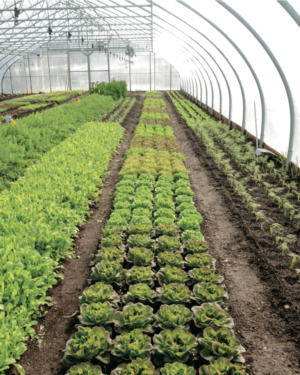
The Aim of A Greenhouse
The aim of a greenhouse is to create climatic conditions that are optimal for plant growth. The same should apply to soil conditions. Plant growth is intensified in the greenhouse, so extra care must be taken with soil preparation.
All the factors that were stressed in the chapter on soil fertility are triply stressed here. Applications of well-finished compost are required for successful greenhouse culture.
Heated greenhouse production of high-demand crops is a valuable magnet to attract customers to the rest of the farm’s produce. It can also be a highly lucrative area of specialization in its own right. But don’t jump into it without first giving the matter considerable thought. Growing high-quality greenhouse vegetables demands a real commitment to management and an attention to detail.
Extend the Growing Season: How Can It Be Done Better?
The progressive grower always keeps one eye on doing a job and the other on how it could be done better. Today’s ideas were yesterday’s suggestions. Tomorrow’s ideas will rise from today’s problems. The best new concepts come from experienced practitioners and were devised to answer their needs.
Once you gain experience, the next improvement for you as a small grower, and for countless other food producers, is just around the corner.
Recommended Reads
Recent Articles
Does the cold weather have you dreaming about fresh greens and colorful salad? Grow and harvest sprouts indoors to make those dreams a reality!
Read MoreNo heated greenhouse? No problem! Discover the secrets to thriving winter gardening without breaking the bank.
Read MoreYear-round growth without the hefty price tag of a greenhouse? Low tunnels are the cost-effective and flexible solution you’ve been looking for. Grow year-round with low tunnels!
Read MoreWintergreen is the stunning evergreen groundcover that’s a game-changer for your garden! It’s cherished for its aromatic leaves, vibrant fall color & bright berries.
Read More

